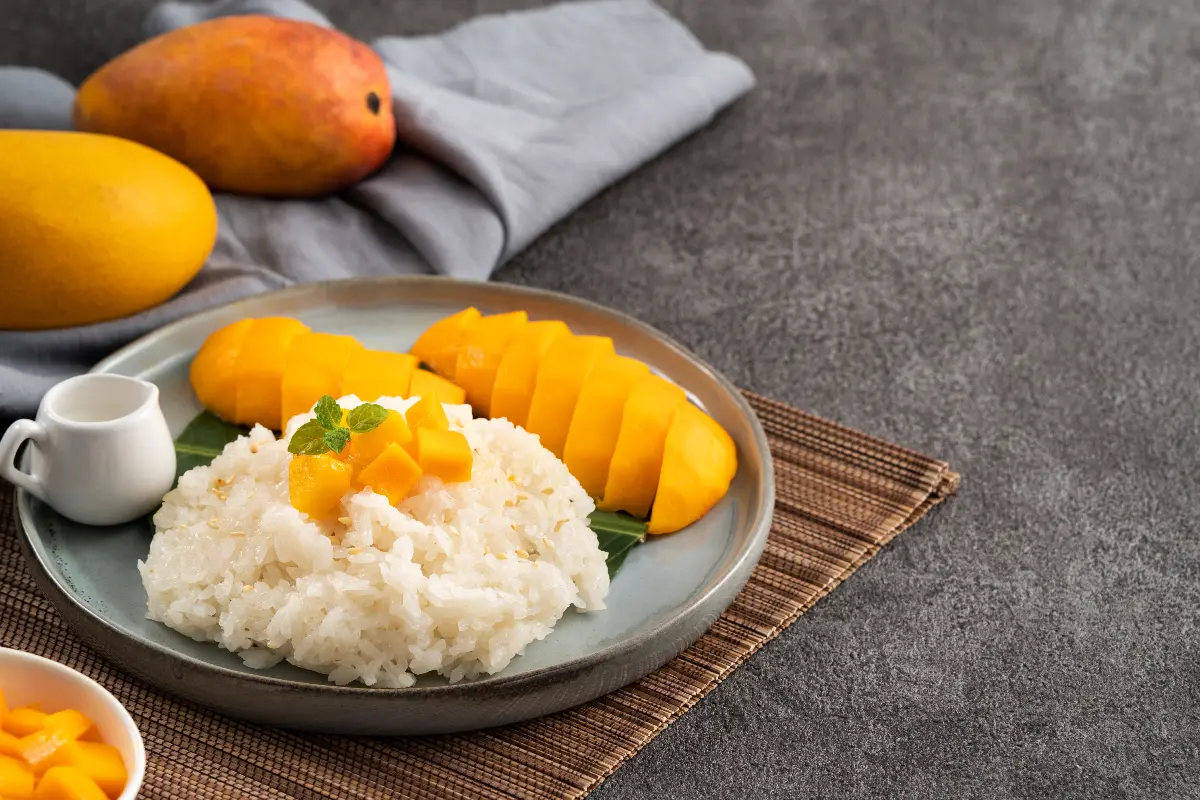When one thinks of Thailand, what often springs to mind is the overwhelming symphony of its street food, bustling markets, and, of course, the sweet indulgences that the Thai cuisine offers. Among these delights is one dessert that is as much a treat for the taste buds as it is a feast for the eyes—Khao Niao Mamuang, or Mango Sticky Rice. This delectable dessert harmoniously pairs the slight saltiness of coconut-soaked sticky rice with the fresh sweetness of ripe mangos. It's a combination that captures the essence of Thai flavours and the joyful spirit of its culture.

The origins of Khao Niao Mamuang trace back to the traditional Thai farming culture, where rice plays an integral role. Sticky rice, also known as glutinous rice, is particularly favoured in the northeastern and northern parts of Thailand. The method of pairing it with mango, however, is a genius twist that capitalises on Thailand's abundant mango varieties, marrying the grain's chewy texture with the fruit's lush, velvety smoothness.
Anecdotes suggest that this unique dessert gained popularity in the central region of the country as a seasonal treat, particularly enjoyed during the summer months when mangoes are at their peak. With the passage of time, Khao Niao Mamuang has not only become a year-round staple in Thai restaurants worldwide but also a must-try for travellers visiting the Land of Smiles.
Making Khao Niao Mamuang at home is simpler than one might imagine and requires just a handful of basic ingredients. The starting point is, of course, the sticky rice, which needs to be soaked in water for several hours or overnight. This crucial step ensures that the grains puff up nicely and attain the necessary softness. Once the rice has been steamed—traditionally in a bamboo basket—it is then time to concoct the sweet coconut milk that will infuse the rice with rich, fragrant flavours.
The coconut milk is gently heated with palm sugar and a pinch of salt added to create a delicate balance of sweetness and savoriness. Some recipes call for the inclusion of pandan leaves, which impart a subtle, aromatic note that is distinctly Southeast Asian. The prepared sticky rice is then mixed with this warm coconut milk, allowing it to absorb the liquid and expand further.
Presentation is a key element when serving Khao Niao Mamuang. As any culinary aesthete would note, the allure of this dessert is its vibrant colour contrast—the stark white of the rice, the bright yellow hue of the mango, and the drizzle of coconut cream on top with a sprinkle of roasted mung beans or sesame seeds. Slicing the mango in a particular way, usually a hedgehog cut or delicate cubes, not only makes it visually appealing but also ensures an ideal fruit-to-rice ratio in every bite.

Sourcing the right type of mango is another important factor. The most authentic Khao Niao Mamuang is made with Nam Dok Mai, or fragrant water mango, known for its sweet, tender flesh and minimal fibers. Alternatives like the Ataulfo or Honey Mango can serve as worthy substitutes should you find yourself far from a Thai grocery store.
A testament to the simple yet profound pleasures of Thai cuisine, eating Khao Niao Mamuang evokes a sensory journey that is unparalleled. The chewy, gooey rice soaked in a sweet, creamy sauce, a burst of fruity flavour, and the slight crunch from the toasted mung beans offer a truly harmonious mouthfeel and an explosion of flavours.
Moreover, in a world that's increasingly conscious about dietary preferences, Khao Niao Mamuang stands out as being naturally gluten-free and can be easily made vegan by substituting the palm sugar and opting for plant-based alternatives. It is a dessert that is inclusive, much like the culture from which it originates.
In conclusion, Khao Niao Mamuang is undoubtedly one of Thailand's culinary gems—a dessert that is simple to make yet deeply satisfying. It captures the essence of Thai gastronomy, where each ingredient is respected and allowed to shine, and where the combination of flavours creates something much greater than the sum of its parts. Whether enjoyed as a sweet finish to a meal, a midafternoon snack, or a soothing treat on a warm day, this classic Thai dessert continues to win hearts the world over, one sticky, sweet spoonful at a time.